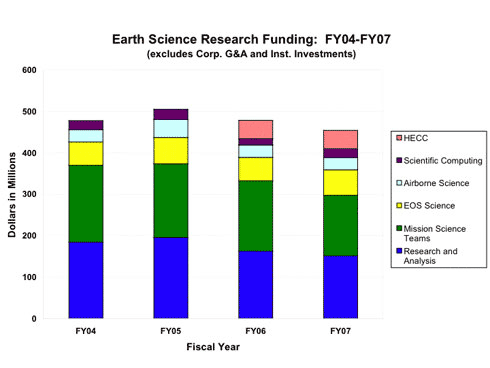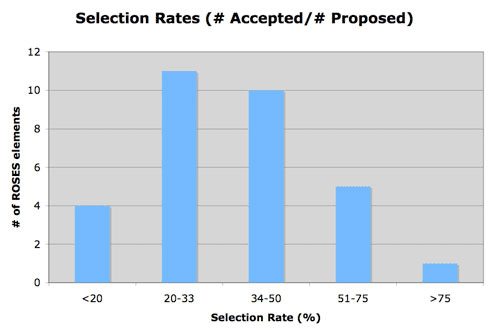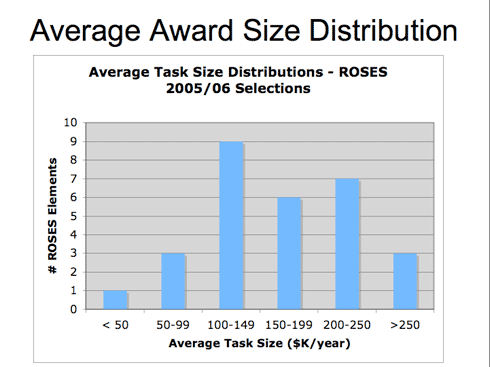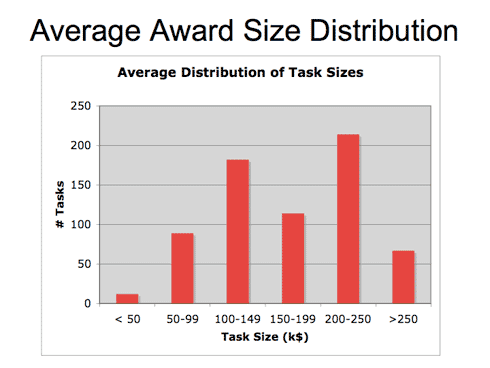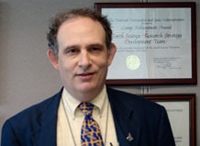Earth Science Division Selected Major Accomplishments in 2007 from Alan Stern's LPSC presentation
- Launched NOAA-N (POES) for NOAA.
- Completed concept studies for all 15 Earth Science Decadal Survey missions, and held community workshops for the 4 highest priorities.
- Conducted a comprehensive Senior Review involving operational agency as well as science input, resulting in the approval of extensions to 11 Earth observing missions.
- Continued the development of 7 new Earth science and applications missions for launch between 2008 and 2013.
- Advanced OSTM, GOES-O and OCO toward their 2008 launch dates.
Central features of the FY09 budget for Earth Science include the near-term launches of the Ocean Surface Topography Mission in June 2008 and the Orbiting Carbon Observatory in December 2008, and the initiation of a new funding wedge to accelerate the implementation of the satellite missions called for by the NRC in its first decadal survey for Earth Science ("Earth Science and Applications from Space, National Imperatives for the Next Decade and Beyond"), which was released in January, 2007. With the FY09 budget, two new missions were announced - a soil moisture/freeze-thaw cycle measuring mission and an ice-sheet thickness and vegetation canopy measuring mission, with launches in 2012 and 2015, respectively. The budget for each mission includes funding for a competitively selected science team that will define the mission requirements, develop the retrieval algorithms, support the calibration and validation of the space-based observations, and analyze and interpret the post-launch mission data. The research conducted by the mission science teams complements that in the existing Research and Analysis program; both activities support underlying science and the integration of science using data obtained from multiple platforms. The FY09 budget also includes funding to start 3 other new missions before 2013, at least one of which will be competitively selected. The budget request continues full funding for the Glory (launch date early 2009), NPOESS Preparatory Project (5/2010), Aquarius (5/2010), Landsat Data Continuity Mission (7/2011), and Global Precipitation Missions (2 launches, 6/2013 and 6/2014), each of which has an associated NASA-funded science team.
Dr. Jack Kaye
Welcome to the Earth Science Division corner of the SARA web page. Dr. Michael Freilich, is the Director of the Earth Science Division, Dr. Bryant Cramer is the Deputy Director, and Jack Kaye is the Associate Director and R&A lead.
The Research Program Objectives for the Earth Science Division are:
- Advance knowledge of the Earth as a system through development and analyses of remotely sensed data, in situ and airborne measurements, and modeling
- Expand and demonstrate utility of NASA and related spaceborne mission data through measurement-focused investigations and development of advanced products
- "Mainstream" spaceborne Earth Obs products to encourage broad use by non-remote sensing experts
- Identify important yet tractable future problems and missions given expert knowledge of both science and technology state-of-the-art
- Identify key future areas of technology development to address presently intractable problems
- Provide a community of researchers that can support transition of new knowledge to applications (Applied Sciences) and prediction/operations (inter-agency)
The Research Program Structure is as follows:
- Research and Analysis - mainly individual investigator competed activities, organized predominantly around scientific disciplines
- Mission Science Teams - support for investigators affiliated with individual satellite missions or groups of closely related missions
- EOS Science - includes calibration/validation for EOS and interdisciplinary science, as well as EOS project science office
- Airborne Science - includes operation of aircraft platforms and investments to support bringing new capability into NASA airborne science programs
- High End Computing - includes investment in supercomputing capability to support community and infrastructure needed for its use
The Earth Science Division R&A and R&A like programs:
- R&A includes several basic areas
- Laboratory investigations - especially spectroscopy, kinetics, and photochemistry
- Surface-based measurement networks
- Airborne and balloon-based measurements, including field campaigns (also in EOS cal/val)
- Integrated analysis of satellite data, including analysis of multiple data sets
- Process model development and testing
- Regional/global model development, testing, and application
- Decisions
- Technology
- Advanced Component Technology
- Advanced Information System Technology
- Instrument Incubator Program
- Education and Public Outreach (EPO)
- New Investigator Program/Student Fellowships
- International Polar Year/EPO
- Earth Observing System Data and Information System (EOSDIS)
- Research, Education and Applications Solutions Network (REASoN)/
MeASUREs - Advanced Cosmic Ray Composition Experiment for the Space Station (ACCESS)
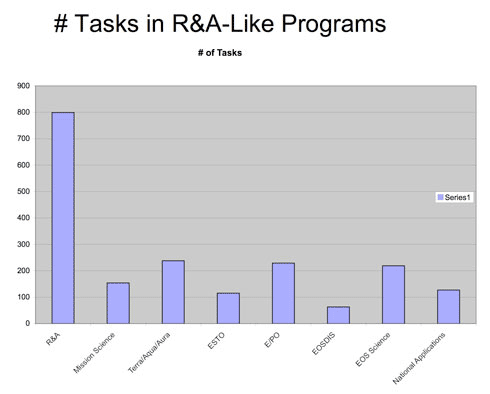
Earth Science Questions
How is the Earth changing and what are the consequences for life on Earth?
How is the global Earth system changing?
What are the primary causes of change in the Earth system?
How does the Earth system respond to natural and human-induced changes?
What are the consequences for human civilization?
How will the Earth system change in the future?
Earth Science Focus Areas
Atmospheric Composition
Weather
Carbon Cycle & Ecosystems
Water & Energy Cycle
Climate Variability & Change
Example of Scientific Integration
Documenting changes in global sea level, being able to understand those changes, and predict their future evolution
Contributing Program Elements:
- R&A Disciplines
- Physical Oceanography
- Terrestrial Hydrology
- Cryospheric Science
- Space Geodesy
- Modeling and Analysis
- Instrument Teams
- Jason (global sea level)
- ICESat (ice sheet thickness)
- GRACE (ice mass, stored water)
- ASTER (glacier extent)
- AMSR-E (SST/upper ocean heat content)
- Airborne Science
- Lidar flights for ice thickness studies
- Interdisciplinary Science
